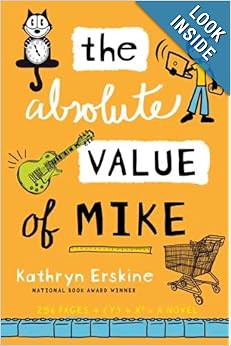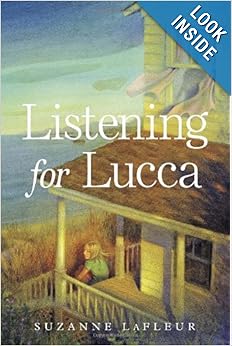 Peter Nimble is a blind orphan and a thief. His other senses are, of course, exceptionally sharp and perceptive. When he steals a box with three sets of magical eyes and receives a quest to travel to the Vanished Kingdom and rescue the people there, Peter Nimble is challenged beyond anything he has ever experienced in his thieving life. Maybe the Vanished Kingdom needs a blind thief, and maybe Peter Nimble needs to become a hero and find a real home.
Peter Nimble is a blind orphan and a thief. His other senses are, of course, exceptionally sharp and perceptive. When he steals a box with three sets of magical eyes and receives a quest to travel to the Vanished Kingdom and rescue the people there, Peter Nimble is challenged beyond anything he has ever experienced in his thieving life. Maybe the Vanished Kingdom needs a blind thief, and maybe Peter Nimble needs to become a hero and find a real home.
Beautiful, humorous, and meaningful writing characterizes this fantasy adventure. The author also inserts little asides that illuminate and explain the story and the world of Peter Nimble. Here are a few sample quotes to whet your appetite:
“Now, for those of you who know anything about blind children, you are aware that they make the very best thieves. As you can well imagine, blind children have incredible senses of smell, and they can tell what lies behind a locked door – be it fine cloth, gold, or peanut brittle – at fifty paces.
Moreover, their fingers are so small and nimble that they can slip right through keyholes, and their ears so keen that they can hear the faint clicks and clacks of every moving part inside even the most complicated lock. Of course, the age of great thievery has long since passed; today there are few child-thieves left, blind or otherwise.”
“There is something wonderful that happens between true friends when they find themselves no longer wasting time with meaningless chatter. Instead, they become content just to share each other’s company. It is the opinion of some that this sort of friendship is the only kind worth having. While jokes and anecdotes are nice, they do not compare with the beauty of shared solitude.”
“If ever you have had the chance to spend quality time with a villainous mastermind, you will know that these people are extraordinarily fond of discussing their evil schemes out loud.”
“You may be thinking that his blindness is no handicap at all, and that it somehow gives him an advantage over the average seeing person. Some of you may even be thinking to yourselves, ‘Boy! I wish I were blind like the great Peter Nimble!’ If you are thinking that, stop right now. Because whatever benefits you may believe that blindness carries with it, you must understand that there are just as many disadvantages.”
Caveats: The story does include some rather violent and creepy images and episodes. There’s a murder of murderous crows who peck out Peter’s eyes and who peck another (villainous) character to death. There are gangs of evil apes and a few dangerous sea serpents. The children in the Vanished Kingdom are degraded and enslaved, and the adults are brainwashed into acquiescence. However, evil is ultimately defeated, and goodness and light win.
An interview with Jonathan Auxier in which he discusses the difficulties of writing a story from the point of view of a blind character.
Mr. Auxier also wrote The Night Gardener, another creepy tale with fantastic themes and images.









